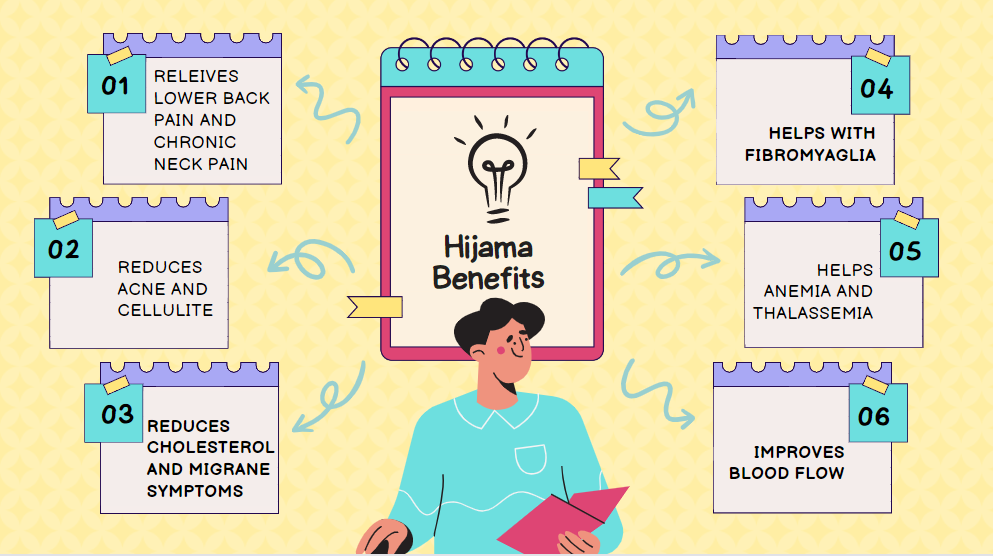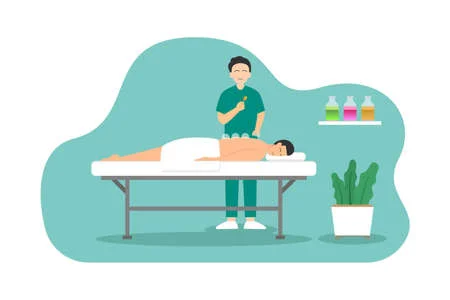Are you looking for a natural, safe and effective way to alleviate pain, boost your immune system and improve your overall health? Look no further than Hijama Therapy Benefits, an ancient form of alternative medicine practiced for centuries throughout the world. This unique therapy involves the use of suction cups to create a vacuum-like effect on specific areas of the body, stimulating blood flow and promoting healing. From reducing inflammation and improving circulation, to boosting the immune system and treating a wide range of conditions.
Hijama Therapy has been proven to be a powerful tool for achieving optimal health and wellbeing. So why not join the millions of people who have already experienced the benefits of this innovative therapy and discover how it can transform your life today?
The History of Hijama Therapy
Hijama Therapy, also known as Cupping Therapy, has been practiced for over 5000 years, with origins in ancient Egypt, China, and Greece. The practice involves creating a vacuum inside glass cups that are placed on specific points on the body. In fact, the word “Hijama” is derived from the Arabic “Hijm,” which means “sucking.”
Over the years, Hijama Therapy has been used to treat a variety of ailments, including respiratory problems, digestive issues, and skin conditions. The therapy was popularized in the Western world in the 19th century and was commonly used by physicians until the early 20th century when it was replaced by modern medicine. However, in recent years, Hijama Therapy has regained popularity as a natural and effective form of alternative medicine.
How Hijama Therapy Works
Hijama Therapy involves the use of suction cups that create a vacuum-like effect on specific areas of the body. The cups are typically made of glass, plastic or bamboo and come in various sizes. The therapist will place the cups on the skin and use a pump or heat to create a suction that draws the skin and underlying tissue into the cup. This suction creates a negative pressure that stimulates blood flow and promotes healing.
The suction created by the cups also helps to loosen and release the fascia, which is the connective tissue that surrounds muscles and organs. This can help to relieve tension and pain in the affected area. Once the cups are removed, the skin may be left with circular bruises. However, these bruises are not painful and will typically disappear within a few days.
Benefits of Hijama Therapy for Pain Relief
One of the most common reasons people seek out Hijama Therapy is for pain relief. The therapy has been shown to be effective in treating a variety of conditions, including back pain, neck pain, and headaches. The suction created by the cups can help to release tension in the muscles and improve circulation to the affected area, which can help to reduce pain and inflammation.
In addition, Hijama Therapy can help to improve the overall health of the body, which can reduce the risk of chronic pain. By promoting blood flow and stimulating the immune system, Hijama Therapy can help to prevent conditions that can lead to chronic pain, such as arthritis and fibromyalgia.

Boosting the Immune System with Hijama Therapy
Hijama Therapy has been shown to be effective in boosting the immune system, which can help to prevent illness and disease. The therapy works by stimulating the production of white blood cells, which are responsible for fighting off infection and disease. In addition, Hijama Therapy can help to improve the flow of lymphatic fluid, which is responsible for removing waste and toxins from the body.
By improving lymphatic flow, Hijama Therapy can help to boost the immune system and prevent illness.
Treating Common Ailments with Hijama Therapy
Hijama Therapy has been used to treat a variety of conditions, including respiratory problems, digestive issues, and skin conditions. The therapy has been shown to be effective in treating asthma, bronchitis, and chronic cough. It can also help to improve digestion and relieve symptoms of irritable bowel syndrome.
In addition, Hijama Therapy has been shown to be effective in treating skin conditions such as eczema, acne, and psoriasis. The suction created by the cups can help to improve circulation to the affected area, which can promote healing and reduce inflammation.
The Process of Hijama Therapy
Hijama Therapy typically involves a consultation with a trained therapist to determine the best course of treatment. The therapist will then place cups on specific points on the body, usually on the back, neck, arms or legs. The cups will be left in place for several minutes, or until the skin turns red or purple. Once the cups are removed, the therapist may apply an ointment or oil to the affected area to promote healing.
The cups may be made of:
- Glass
- Bamboo
- Earthenware
- Silicone
The entire process typically takes between 30-60 minutes, depending on the number of cups used and the severity of the condition being treated.
Who Shouldn’t try Hijama Therapy
While Hijama Therapy is generally safe and effective, there are some people who should avoid the therapy. Pregnant women, people with bleeding disorders, and people with skin conditions such as eczema or psoriasis should avoid Hijama Therapy.
In addition, Hijama Therapy should not be performed on areas of the body that have been recently injured or have open wounds.
Risks and Side Effects of Hijama Therapy
While Hijama Therapy is generally safe, there are some risks and side effects associated with the therapy. The most common side effect is bruising, which typically disappears within a few days. In rare cases, the suction created by the cups can cause blisters, burns, or skin infections. To reduce the risk of side effects, it is important to seek out a trained and licensed therapist who uses clean and sterilized equipment.
It is also important to follow any post-treatment instructions provided by the therapist, such as avoiding hot showers or baths.
Frequently Asked Questions on Hijama Therapy
- Is Hijama Therapy painful? Hijama Therapy is not typically painful, although some people may experience discomfort during the treatment. The suction created by the cups can cause a tight or pulling sensation, but this typically subsides once the cups are removed.
- How many sessions are needed to see results? The number of sessions needed to see results can vary depending on the condition being treated. Some people may see improvement after only one session, while others may require multiple sessions.
- Is Hijama Therapy covered by insurance? Hijama Therapy is not typically covered by insurance, although some insurance plans may cover the cost of alternative therapies.
- How long do the bruises last? The bruises caused by Hijama Therapy typically last between 3-7 days.
What to Ask Your Doctor First
Talk with your doctor before you start cupping or any other type of alternative or complementary medicine. And talk extensively with your cupping therapist, too, before you try it. Ask:
- What conditions do they use cupping for?
- What is your training?
- What is your experience in using it?
- Am I already getting the standard treatments for my condition?
- Are there reasons I should not get cupping?
Conclusion and Final Thoughts
Hijama Therapy is a natural and effective form of alternative medicine that has been used for centuries to promote healing and improve overall health. From reducing pain and inflammation to boosting the immune system and treating a wide range of conditions, Hijama Therapy has been proven to be a powerful tool for achieving optimal health and wellbeing. While the therapy is generally safe, it is important to seek out a trained and licensed therapist who uses clean and sterilized equipment to reduce the risk of side effects.
By incorporating Hijama Therapy into your wellness routine, you can experience the numerous benefits of this ancient therapy and achieve optimal health and wellbeing.
